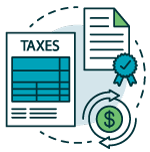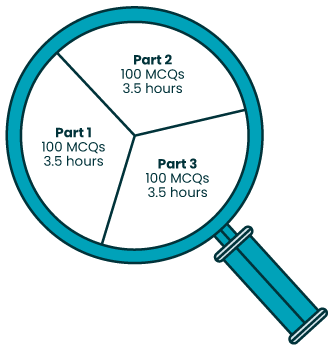Contact Us : 800.874.5346 International: +1 352.375.0772
We’ve outlined everything you need to know about the EA exam, also called the Special Enrollment Exam (SEE) to help you prepare to pass. We’ll start with what exactly Enrolled Agents do so you can decide if it sounds like a good career fit and figure out whether passing the EA exam is worth the effort.
An EA is someone who has passed the EA exam and earned the highest credential awarded by the IRS.
Enrolled Agents are tax professionals who have demonstrated special competence in tax matters and are granted unlimited rights to practice before the IRS as the agents or legal representatives of taxpayers.
In this context, “practice before the IRS” means EAs can work and communicate with the IRS on all matters regarding a client’s rights, privileges, and liabilities under laws and regulations administered by the IRS.
The prestige associated with the IRS credential can help tax preparers increase their income, and EAs are listed on the Directory of Federal Tax Return Preparers with Credentials and Select Qualifications, increasing their exposure essentially for free.
The EA also greatly expands the number of services a tax preparer can offer to potential clients.
The privileges granted by the EA license open doors for Enrolled Agents to work at accounting firms, tax offices, and other businesses, plus earn more for the same work they were already doing as a tax preparer. EAs are valuable to firms because they can practice in all 50 states and prepare taxes for international clients filing in the US, and a massive number of international companies have a US presence.
An EA tax preparer also enjoys increased tax preparation and representation rights compared to tax preparers without the EA designation. Non-credentialed tax preparers can only represent clients whose tax returns they’ve prepared. EAs, on the other hand, can represent clients before the IRS for various matters. EAs represent taxpayers with issues related to:




These increased representation rights mean EAs are able to better serve all of their clients.
There’s only one real obstacle most tax preparers face when they decide to become an EA: you must pass the Enrolled Agent exam (also known as the Special Enrollment Examination or SEE) before you can apply for enrollment with the IRS.
The IRS EA exam is a comprehensive three-part test that tax preparers must pass in order to become an IRS Enrolled Agent. After tax preparers pass all three Enrolled Agent exams and complete the other requirements (there aren’t many!), the IRS distinguishes them with the EA designation. It signals a high level of expertise and allows them to practice before the IRS.
Each of the three EA tests has 100 multiple-choice questions and a 3.5 hour testing time. The Enrolled Agent test is administered at Prometric testing centers, which are located in the US and internationally.
There are no education or experience requirements you need to meet in order to take the EA exam. You should be able to pass all three parts within one year, but you have two years to pass if needed. The IRS extended this period Opens in new window to three years to provide added flexibility during the COVID-19 pandemic.
Once you pass an exam part, that credit is valid for a two-year carryover period. After two years, the credit expires and you’ll have to re-take that part if you haven’t passed the remaining exam parts.

The three EA exams test the tax law of the previous year, which is why it’s beneficial to study for the EA exam after tax season when the most recent tax law is fresh in your mind and try to pass in one year (so you only have to thoroughly study one year’s tax law). If you pass a part, you won’t have to re-take it when the latest tax law becomes testable unless you aren’t able to pass all three parts within the two-year carryover period.
You can take the Enrolled Agent exam from May 1 through the end of February of the following year. The intervening months, March and April, are used to update the Enrolled Agent exam content.
Each exam part covers major topics the IRS calls “domains.” The IRS releases Exam Content Outlines Opens in new window detailing these domains and the content tested in them. We’ve broken down the domains tested per part, the approximate number of questions per domain, and percent of the exam covered by each domain.
The 100 multiple-choice questions that make up each exam include 15 experimental questions. The topics of the experimental questions cannot be known, so this breakdown accounts for the remaining 85 questions.
The IRS Enrolled Agent exam pass rate fluctuates from 70% to 74%. This is a high pass rate compared to other professional accounting exams, like the CPA, which has an average pass rate of 45-50%. The IRS sets a scaled passing score at 105 out of the available 130 points.
We recommend sitting for Part 1 or 2 first because some of the content tested in Part 3 builds off of content tested in Parts 1 and 2. Take a look at the topics tested on Parts 1 and 2 and decide which topics you feel more comfortable with. Sit for Parts 1 and 2 in order of your familiarity level and then take Part 3 last. Testing according to these considerations will help you master the topics so you can pass each part on your first try and become an EA faster.
Take advantage of our free EA exam resources that will guide you through the process of earning your EA designation.
Passing the EA exam is the hardest step to becoming an EA, but it’s just one of the requirements. You’ll also have to: